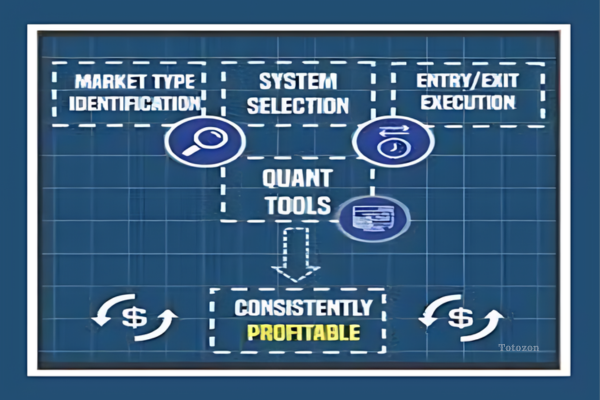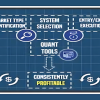-
×
 TRADING NFX Course with Andrew NFX
1 × $5.00
TRADING NFX Course with Andrew NFX
1 × $5.00 -
×
 SQX Mentorship with Tip Toe Hippo
1 × $23.00
SQX Mentorship with Tip Toe Hippo
1 × $23.00 -
×
 The Prop Trading Code with Brannigan Barrett - Axia Futures
1 × $23.00
The Prop Trading Code with Brannigan Barrett - Axia Futures
1 × $23.00 -
×
 WondaFX Signature Strategy with WondaFX
1 × $5.00
WondaFX Signature Strategy with WondaFX
1 × $5.00 -
×
 Scalp Strategy and Flipping Small Accounts with Opes Trading Group
1 × $5.00
Scalp Strategy and Flipping Small Accounts with Opes Trading Group
1 × $5.00 -
×
 Order flow self-study training program with iMFtracker
1 × $10.00
Order flow self-study training program with iMFtracker
1 × $10.00 -
×
 Algo Trading Masterclass with Ali Casey - StatOasis
1 × $23.00
Algo Trading Masterclass with Ali Casey - StatOasis
1 × $23.00 -
×
 Quantamentals - The Next Great Forefront Of Trading and Investing with Trading Markets
1 × $8.00
Quantamentals - The Next Great Forefront Of Trading and Investing with Trading Markets
1 × $8.00 -
×
 Essentials in Quantitative Trading QT01 By HangukQuant's
1 × $23.00
Essentials in Quantitative Trading QT01 By HangukQuant's
1 × $23.00 -
×
 High Probability Trading Using Elliott Wave And Fibonacci Analysis withVic Patel - Forex Training Group
1 × $10.00
High Probability Trading Using Elliott Wave And Fibonacci Analysis withVic Patel - Forex Training Group
1 × $10.00 -
×
 0 DTE Options Trading Workshop with Aeromir Corporation
1 × $15.00
0 DTE Options Trading Workshop with Aeromir Corporation
1 × $15.00 -
×
 $20 – 52k 20 pips a day challange with Rafał Zuchowicz - TopMasterTrader
1 × $5.00
$20 – 52k 20 pips a day challange with Rafał Zuchowicz - TopMasterTrader
1 × $5.00 -
×
 Butterfly and Condor Workshop with Aeromir
1 × $15.00
Butterfly and Condor Workshop with Aeromir
1 × $15.00 -
×
 The Orderflows Trade Opportunities Encyclopedia with Michael Valtos
1 × $8.00
The Orderflows Trade Opportunities Encyclopedia with Michael Valtos
1 × $8.00 -
×
 Advanced Spread Trading with Guy Bower - MasterClass Trader
1 × $15.00
Advanced Spread Trading with Guy Bower - MasterClass Trader
1 × $15.00
The Profitable Trading System Blueprint with Macro Ops
$49.00 Original price was: $49.00.$6.00Current price is: $6.00.
File Size: 328.3 MB
Delivery Time: 1–12 hours
Media Type: Online Course
Content Proof: Watch Here!
You may check content proof of “The Profitable Trading System Blueprint with Macro Ops” below:
The Profitable Trading System Blueprint with Macro Ops
In the world of trading, having a robust system can make all the difference. Macro Ops, a renowned trading education platform, offers a comprehensive blueprint for developing a profitable trading system. This article will guide you through the essential elements of creating a trading system that not only works but thrives in various market conditions.
Introduction
Who are Macro Ops?
Macro Ops is a trading education platform that provides deep insights into macroeconomic trends, market analysis, and trading strategies. Their goal is to help traders at all levels achieve consistent profitability.
Why a Trading System is Crucial
A well-structured trading system removes emotion from trading decisions, ensures consistency, and enhances the ability to evaluate performance objectively.
Key Components of a Profitable Trading System
1. Defining Your Trading Goals
Before you start building your system, it’s crucial to define your goals. Are you aiming for short-term gains or long-term growth? Your goals will shape your strategy and risk management approach.
2. Understanding Market Conditions
Markets can be volatile and unpredictable. Understanding the different market conditions—bullish, bearish, and sideways—helps in adapting your trading system accordingly.
3. Developing a Trading Plan
A trading plan outlines your strategy, including entry and exit points, risk management rules, and performance evaluation metrics.
Elements of a Trading Plan
- Strategy Definition: Define your trading strategy clearly.
- Entry and Exit Rules: Specify criteria for entering and exiting trades.
- Risk Management: Set rules for managing risk, including stop-loss and take-profit levels.
4. Selecting the Right Tools and Indicators
The right tools and indicators can enhance your trading system’s effectiveness. Macro Ops emphasizes the importance of using a combination of technical and fundamental analysis.
Popular Trading Indicators
- Moving Averages
- Relative Strength Index (RSI)
- Bollinger Bands
- MACD (Moving Average Convergence Divergence)
5. Backtesting Your System
Backtesting involves running your trading system against historical data to evaluate its performance. This step is crucial for identifying any weaknesses and making necessary adjustments.
Steps for Backtesting
- Collect Historical Data: Gather data relevant to your trading strategy.
- Run Simulations: Apply your system to historical data.
- Analyze Results: Evaluate the system’s performance and make adjustments.
Implementing the Trading System
1. Setting Up Your Trading Platform
Choose a reliable trading platform that supports your system’s requirements. Ensure it offers the necessary tools and indicators.
2. Executing Trades
When executing trades, discipline is key. Stick to your trading plan and avoid making impulsive decisions based on emotions.
3. Monitoring and Adjusting
Regularly monitor your system’s performance and make adjustments as needed. Market conditions can change, and your system should be flexible enough to adapt.
Risk Management Strategies
1. Position Sizing
Proper position sizing helps in managing risk and maximizing returns. Macro Ops recommends using a fixed percentage of your capital for each trade.
2. Stop-Loss Orders
Stop-loss orders limit potential losses by automatically closing a trade when the price reaches a specified level.
3. Diversification
Diversifying your trades across different assets can help mitigate risk and reduce the impact of a single losing trade.
Psychological Aspects of Trading
1. Maintaining Discipline
Discipline is crucial for successful trading. Stick to your plan and avoid deviating from your strategy based on market noise.
2. Managing Emotions
Emotions like fear and greed can negatively impact trading decisions. Develop a mindset focused on long-term success rather than short-term gains.
3. Continuous Learning
The markets are constantly evolving. Continuous learning and adapting to new information are essential for maintaining a profitable trading system.
Common Mistakes to Avoid
1. Overtrading
Overtrading can lead to increased transaction costs and emotional exhaustion. Stick to your plan and avoid unnecessary trades.
2. Ignoring Risk Management
Neglecting risk management can lead to significant losses. Always use stop-loss orders and position sizing to manage risk.
3. Failing to Adapt
Markets change, and so should your trading system. Regularly review and adjust your system to stay aligned with current market conditions.
Conclusion
Building a profitable trading system requires careful planning, disciplined execution, and continuous adaptation. Macro Ops provides a detailed blueprint that can help traders develop a robust system tailored to their individual goals and market conditions. By following these guidelines, you can enhance your trading performance and achieve consistent profitability.

Commonly Asked Questions:
- Business Model Innovation: Accept the truth of a legitimate business! Our strategy is organising a group buy in which participants share the costs. We use these cash to acquire popular courses from sale pages and make them available to people with limited financial resources. Despite the authors’ worries, our clients love the cost and accessibility we give.
- The Legal Environment: Yes or No The legality of our activity is ambiguous. While we don’t have specific permission from the course authors to resell the material, there is a technicality at work. The author did not specify any limits on resale when purchasing the course. This legal intricacy is both an opportunity for us and a boon for individuals looking for low-cost access.
- Quality Control: Uncovering the Truth
Getting to the heart of the issue – quality. Purchasing the course straight from the sale page guarantees that all documents and resources are the same as those obtained through traditional channels.
However, we distinguish ourselves by going beyond personal research and resale. It is crucial to note that we are not the official course providers, which means that the following premium services are not included in our package:
- There are no scheduled coaching calls or sessions with the author.
- Access to the author’s private Facebook group or web portal is not permitted.
- No access to the author’s private membership forum.
- There is no direct email support available from the author or their team.
We operate independently, with the goal of bridging the pricing gap without the extra services provided by official course channels. Your comprehension of our distinct approach is much appreciated.
Be the first to review “The Profitable Trading System Blueprint with Macro Ops” Cancel reply
You must be logged in to post a review.
Related products
Forex Trading
Forex Trading
Forex Trading
Quantamentals – The Next Great Forefront Of Trading and Investing with Trading Markets
Forex Trading
Forex Trading
Forex Trading
Forex Trading
Forex Trading
Forex Trading
Forex Trading












Reviews
There are no reviews yet.